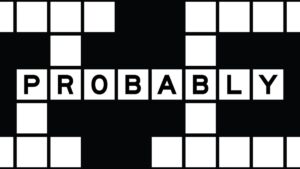MoneyTalks is Stockhead’s regular recap of the ASX stocks, sectors and trends that fund managers and analysts are looking at right now.
Today we hear from Morningstar.
Investors have the tendency to chase performance. And we should stop.
This is one of the primary reasons why Morningstar’s recent study (Mind the Gap) shows investors underperform the investments in their portfolio by 1.7% a year.
“The following 3 ASX shares have been on a strong run and while it can be tempting to assume those strong returns will continue into the future but our analysts believe all of them are significantly overvalued.”
“To say Goodman Group dominates the Australian real estate investment trust (‘REIT’) is an understatement. Goodman currently makes up more than 36% of the S&P/ASX 300 A-REIT Index.
In the past year the stock is up over 71%.
“This contrasts with global REITs which have been hammered as higher interest rates, shifts to online retail and vacant and underutilised office space worry investors. Goodman has avoided many of these fears with a portfolio of industrial properties and a push into data centres.
“Goodman’s rise in price has taken the shares from undervalued territory to trading at a 65% premium to our fair value of $20.75.”
Business strategy and outlook
Goodman Group is one of the world’s premier developers and managers of industrial property projects and investments. The group was co-founded in Australia by Gregory Goodman who remains CEO, and according to Morningstar, now has projects and customers in Asia, Europe, and the Americas.
“A typical project involves obtaining a development site, signing tenants onto leases, and attracting investors who pay for the development and buy the completed project.
“Goodman typically retains a minority stake and continues to manage sites after completion, collecting development fees, leasing fees, management and performance fees, and a share of rent.
“The group’s development pipeline has grown substantially, driven by the race to build e-commerce capability, modernise supply chains, and strong demand for data centres.
“Most of the GMG’s development projects end up in Goodman managed investments, boosting the group’s assets under management enormously.
“We expect this to continue for the next few years as the race continues for the best logistics and data center sites, closest to transport links and the end consumer. Goodman should benefit from its expertise, and its legacy holdings of property, many of which are close to urban centers, and therefore more attractive than outlying greenfield industrial sites.
“However, we expect the remarkable returns to eventually slowdown to a more modest level. First, there is only so much existing property that can be sold and developed, before new sites need to be acquired, likely at substantially higher prices. Second, we see much greater competition in future as many rivals are growing their presence in industrial property.”
GPT sold its stake in iconic office building 1 Farrer Place, with its rationale in part to rotate more capital into industrial property.
“Likewise Dexus (ASX:DXS), Charter Hall (ASX:CHC), Mirvac (ASX:MGR) and Stockland (ASX:SGP) are all eyeing opportunities on the sector, plus Goodman must contend with major overseas players such as Prologis and others.”
Valuation
Morningstar’s fair value estimate for Goodman Group securities is $20.75 per security.
“Our fair value is derived using a discounted cash flow valuation with a 7.3% weighted average cost of capital. Our fair value estimate implies a 2024 P/E of 19.5 times, and 2024 enterprise value/EBITDA of 17.6 times.
“Our valuation for the group is over double its net tangible assets per security of $8.80, as of Dec. 31, 2023. The NTA incorporates the group’s physical assets such as investments in its property funds, but does not capture the value of its intangible funds management and development operations. These are valuable business lines, particularly funds management, because it earns relatively stable management fees, plus the opportunity for performance and transaction fees.
“We expect investment management revenue around 1% of AUM in the near term, which is substantial considering the billions in assets that Goodman manages. We expect that ratio to compress as performance fees become harder to earn as asset price rises slow, and competition from rival REITs results in fee pressure.
“Even so we still expect substantial revenue growth given we expect AUM to more than double over the next decade. Goodman should benefit from economies of scale, and we expect costs to rise at a slower pace than revenue as new dollars are added to its management platform.”
Meanwhile the broker says withdrawals from Goodman investments are usually limited to predetermined windows that lock investors in for years.
“That makes rapid outflows unlikely, underpinning Goodman Group’s base management fee income, margins, and our fair value estimate.”
Fortescue shares have risen more than 32% in the past year, Morningstar notes.
“Unlike some of the other large miners in Australia, Fortescue is a pure play iron ore play. However, there has been a good deal of investor attention on the firms attempt to transform into a clean energy company. While the company has ambitious plans the green energy initiatives are not currently contributing.
Fortescue is currently trading at a 65% premium to the firm’s value estimate of $16.20.
Business strategy and outlook
Fortescue is the world’s fourth-largest iron ore exporter.
Margins are well below industry leaders BHP and Rio Tinto, and some way behind Vale, meaning Fortescue sits in the highest half of the cost curve, says Morningstar.
“This is a primary driver of our no-moat rating. Lower margins primarily result from price discounts from selling a lower-grade (57% to 58% iron) product compared with the 62% iron ore benchmark. The lower grade is effectively a cost for customers through a greater proportion of waste to transport and process, additional energy/coal per unit of steel and lower blast furnace productivity. This results in a lower realized price versus the benchmark. In the 10 years ended June 2023, the company realized an approximate 23% discount versus the 62% benchmark
“Fortescue increased rapidly thanks to favourable iron ore prices, aggressive expansion, and historically low interest rates. Expansion from 55 million metric tons of capacity in fiscal 2012 to around 190 million metric tons by 2023 was unprecedented. Fortescue built much of its capacity around the China boom peak and baked in a higher capital base than peers. This means returns are likely to lag the industry leaders who benefited from building significant capacity when the capital cost per unit of output was lower
Fortescue has done an “admirable” job of reducing cash costs materially versus peers, Morningstar reckons.
“However, product discounts remain a competitive disadvantage. The addition of about 22 million metric tons a year of iron ore production from the 69%-owned Iron Bridge joint venture allows Fortescue blending options. Iron Bridge grades are much higher, around 67%, meaning Fortescue could blend most of its iron ore to increase its average grade to between 58% and 59%.
“Fortescue is a China fixed-asset investment play, with practically all of the company’s iron ore sold there. In the long term, we see demand for steel in China declining as the country’s stock of infrastructure matures and with the rate of urbanization past its peak.
“The company’s strategy is to transform into a diversified iron ore and clean energy company. Its green energy initiatives are at an early stage, but the company has big ambitions in the space.”
Valuation
In early April Morningstar reduced its fair value estimate for no-moat Fortescue to $16.20 per share, down from $17.30, driven by lower near-term iron ore prices.
“We now assume iron ore averages about USD 100 per metric ton from 2024 to 2026 based on the futures curve, down from roughly USD 120. However, we raise our assumed midcycle iron ore price to roughly USD 70 per metric ton from 2028, up from around USD 63 previously.
“This is based on our updated estimate of the marginal cost of production, driven by inflation pushing up and steepening the industry cost curve. Strong demand from China, which accounts for around 70% of the seaborne iron ore trade, is supportive of near-term prices.
“However, longer term we expect demand from China to moderate as steel production peaks and starts to decline as its economy moves away from one reliant on fixed-asset investment to a more consumption-based economy. China’s falling population along with rising scrap-based production also contribute to reduced demand for iron ore, in our view. We also think additional supply is likely, led by Simandou and Vale. Hence we expect a long-term price substantially below the current spot around USD 100 per metric ton.
“Cash flow is discounted at an 9.4% weighted average cost of capital, based on a long-term capital structure comprising 25% debt and 75% equity. The pretax cost of debt assumption is 8%. Our 11% cost of equity reflects very high systematic risk, specifically Fortescue’s lower margins relative to industry leaders BHP, Rio Tinto, and Vale, and somewhat higher debt levels relative to peers. Our fair value estimate equates to an enterprise value/EBITDA exit multiple of 6 in fiscal 2026.”
Well. It’s been a roller coaster ride for ZIP shareholders but the shares have rebounded over the last year and have risen 158%.
“We believe that the market is underestimating downside risks and the shares are currently trading at a 235% premium to our fair value of $0.40,” Morningstar says.
Business strategy and outlook
Zip’s business is more diversified than single-product buy now, pay later, or BNPL, players, with varieties in financing options, transaction limits, and repayment schedules.
Customers can crack on with simple sign-up and checkouts, high acceptance by retailers and flexible financing solutions to help better manage their cash flows. Merchant partners kinda benefit from increased conversion rates, basket sizes, and transaction frequencies.
Zip has a revolving credit business in Australia, the broker reckons.
“Core products are Zip Pay, which finances up to $1,000; and Zip Money, which finances $1,000 and above. It also boasts a broader merchant base including retail, home, electronics, health, auto, and travel. Around 70% of revenue is derived from customers, mainly from account fees and interest.”
Zip adopts an instalment financing model overseas, helping it scale up faster and keep up with competition in the under penetrated global BNPL landscape.
“The acquisition of USbased QuadPay materially boosts its growth prospects,” Morningstar says.
The company enhances customer stickiness via ongoing product add-ons. It has a Pay Anywhere function that lets users transact at a wide variety of avenues without being confined to merchant partners. Users also benefit from promotional offers, cash-back deals, or free credits.
Other highlights for Morningstar include enhanced rewards programs, product protection insurance, or physical cards. For merchant partners, Zip invests in co-marketing to help them acquire new customers.
“We believe Zip can achieve profitability over the very long term, but we think its revenue margins will be increasingly under pressure and it will not achieve the same penetration and transaction frequency overseas as it had domestically.
“While it benefits from the growth of e-commerce and increasing preference for more convenient/cheaper forms of financing, we anticipate heightened competition to its products. The capital-intensive domestic business cannot scale up as quickly, its fee structure potentially creates friction for customers, and its product offering in the U.S lacks clear differentiation.”
Valuation
“We have materially lowered our transaction volume forecasts (implying share losses), lifted our funding cost assumptions, and increased our group expense projections—which previously assumed faster cost-outs and fewer one-off expenses.
“We expect Zip to deliver positive cash earnings before interest, taxes, depreciation and amortisation (“EBTDA”) in fiscal 2024, but should only generate positive free cash flows in fiscal 2025. We expect cash transaction margins to average 3.1% of transaction volumes over our forecast period, at the bottom end of its desired range of 3.0%-4.0%.
Margin improvements are largely from keeping bad debts in line with its five-year average of 2.2%, processing cost-savings, higher product pricing over the near term, and gradual moderation in funding costs.
“We forecast funding costs to average 7.0% of receivables (or 1.8% of transaction volumes) over the three years to fiscal 2026, above fiscal 2023’s rate of 6.0% and its three-year average of 4.5%.
But – and here’s the kicker – Morningstar reckons Zip’s strategy of cost-cutting and maximising revenue is likely to result in market share losses.
“We forecast transaction volumes in ANZ to grow to $5.1 billion by fiscal 2033 from $4.2 billion in fiscal 2023. This equates to a market share loss to less than 8% of the BNPL market from 20% over this period. Similarly, we see U.S. transaction volumes growing to $9.2 billion by fiscal 2033 from $4.6 billion in fiscal 2023. This amounts to a market share loss to less than 1.0% of the U.S. BNPL market from 2.3%.
“Correspondingly, slower-than-expected revenue growth is likely to result in operating margins of less than 5% by fiscal 2033, below our prior expectations of 9%.”
The views, information, or opinions expressed in the interview in this article are solely those of the broker and do not represent the views of Stockhead.
Stockhead has not provided, endorsed or otherwise assumed responsibility for any financial product advice contained in this article.
You might be interested in











